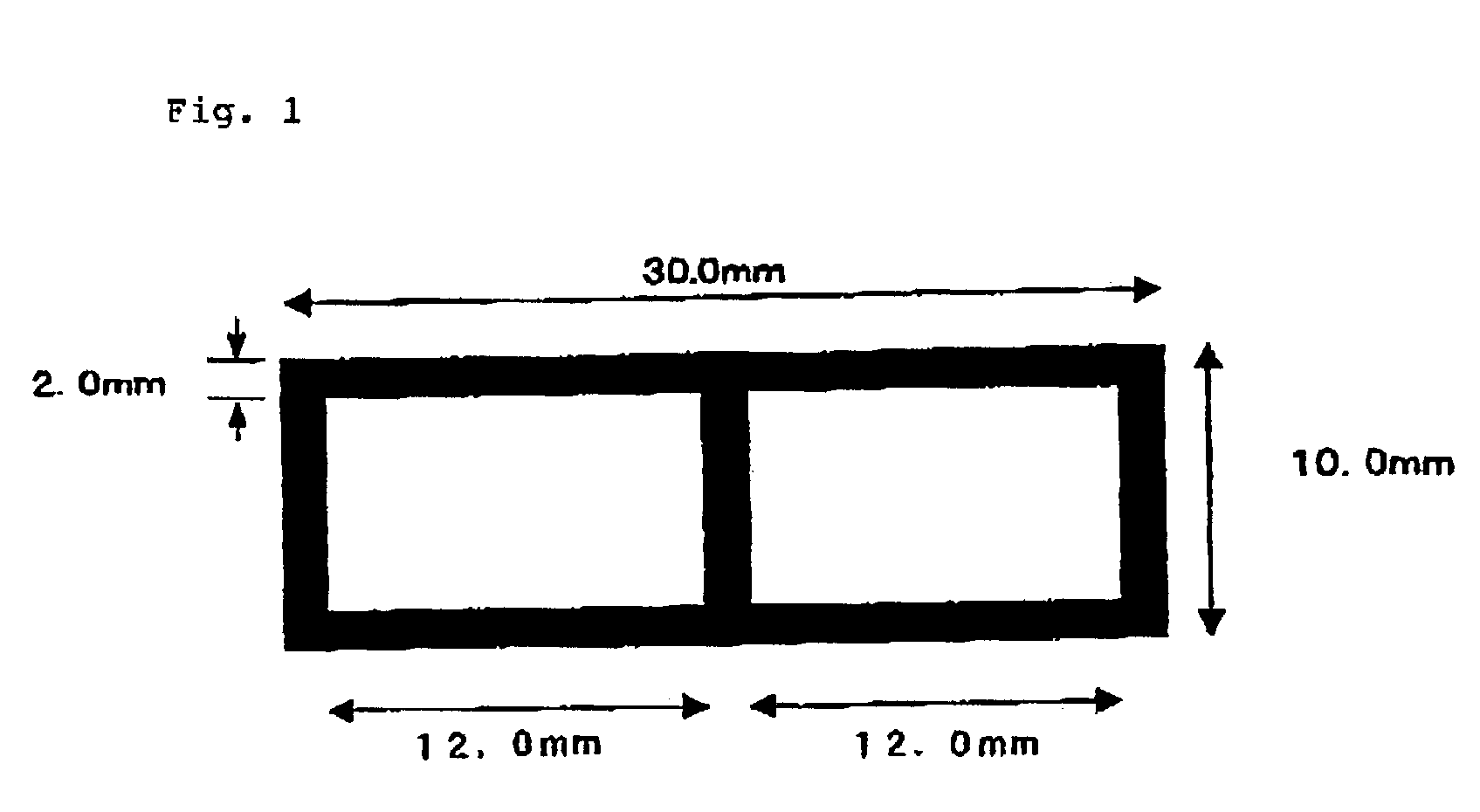Polyester resin composition for profile extrusion molding and molded article comprising the same
a technology of polyolefin resin and composition, which is applied in the field of polyolefin resin composition for profile extrusion molding and profile shapes, can solve the problems of inability to maintain adequate shape, difficult to use polyolefin resin, and inability to convey molded resin to the next step, so as to improve the resistance to whitening on bending, improve the shape accuracy, and improve the effect of sagging
- Summary
- Abstract
- Description
- Claims
- Application Information
AI Technical Summary
Benefits of technology
Problems solved by technology
Method used
Image
Examples
examples
[0086]The present invention will be illustrated by the following examples, which do not limit the scope of the present invention in any way.
[0087]The measured values described in Synthesis Examples are measured as follows:
[0088]Composition of Polyester:
[0089]A quantity of a polyester is dissolved in deuterochloroform and the solution is subjected to 1H-NMR.
[0090]Glass Transition Temperature and Melting Point:
[0091]A sample (10 mg) of a polyester resin is charged in an aluminum pan and sealed with a lid and then heated at a heating rate of 20° C. / min. with a differential scanning calorimeter to measure a glass transition temperature and a melting point of the resin.
[0092]Number and Weight Average Molecular Weights:
[0093]The number and weight average molecular weights of a polyester resin are measured with gel permeation chromatography using hexafluoroisopropanol as a solvent in terms of polystyrene-converted molecular weights.
[0094]Acid Value:
[0095]A polyester resin (1 g) is dissolve...
example 14
[0124]Amorphous polyester (A) (90 parts by weight), crystalline polyester (a) (10 parts by weight), reactive compound (R) (10 parts by weight), sodium stearate (1 part by weight) as a nucleating agent, and tris(3,5-di-tert-butyl-4-hydroxybenzyl) isocyanurate (0.3 part by weight) were mixed to obtain a mixture.
[0125]The resulting mixture was kneaded and profile extrusion molded using the same apparatus and the same conditions as those used in Examples 1–13. The drawing state and accuracy of the molded article were evaluated according to the following criteria:
[0126]
A:The drawing is smooth without sagging, and theedge accuracy of the molded articleis very good from the die to the sizing.B:The drawing is smooth without sagging, and theedge accuracy of the molded articleis good from the die to the sizing.C:The resin sags so that it cannot be conveyed tothe sizing step.
[0127]The results are shown in Table 3.
example 26
[0140]Polyester (e) (100 parts by weight), reactive compound (R) (10 parts by weight) and tris(3,5-di-tert-butyl-4-hydroxybenzyl) isocyanurate (0.3 part by weight) as a stabilizer were mixed to obtain a mixture.
[0141]The resulting mixture was kneaded and profile extrusion molded using the same apparatus and the same conditions as those used in Examples 1–13. The drawing state and accuracy of the molded article were evaluated in the same manner as in Example 14–25.
[0142]The results are shown in Table 5.
PUM
| Property | Measurement | Unit |
|---|---|---|
| melting point | aaaaa | aaaaa |
| melting point | aaaaa | aaaaa |
| melting point | aaaaa | aaaaa |
Abstract
Description
Claims
Application Information
 Login to View More
Login to View More - R&D
- Intellectual Property
- Life Sciences
- Materials
- Tech Scout
- Unparalleled Data Quality
- Higher Quality Content
- 60% Fewer Hallucinations
Browse by: Latest US Patents, China's latest patents, Technical Efficacy Thesaurus, Application Domain, Technology Topic, Popular Technical Reports.
© 2025 PatSnap. All rights reserved.Legal|Privacy policy|Modern Slavery Act Transparency Statement|Sitemap|About US| Contact US: help@patsnap.com

